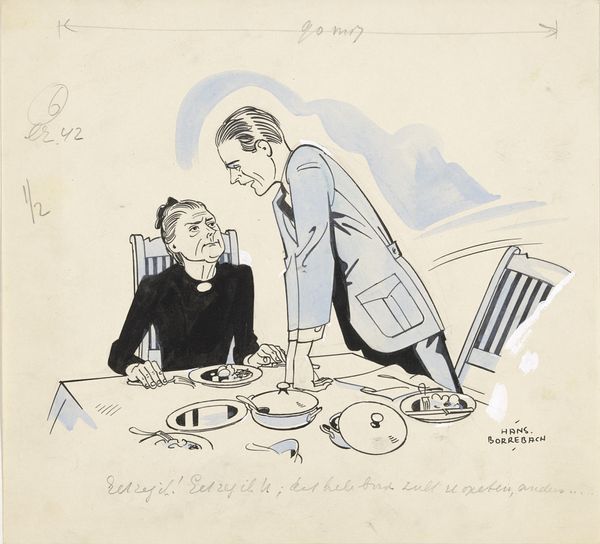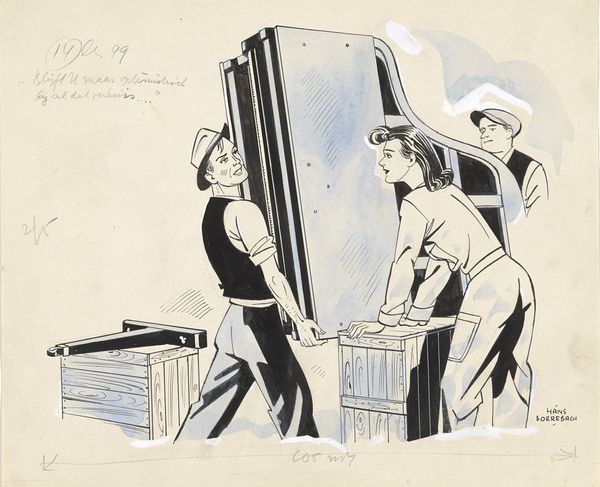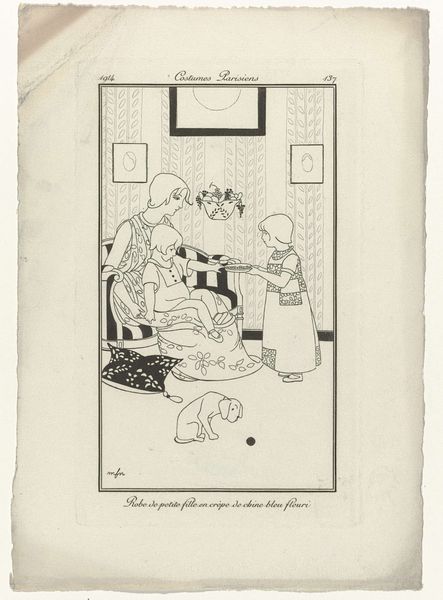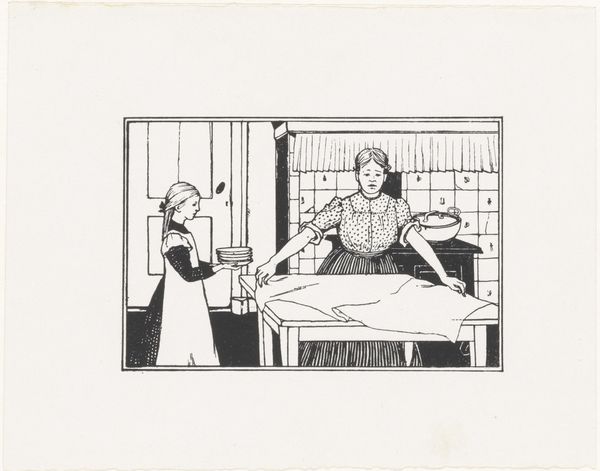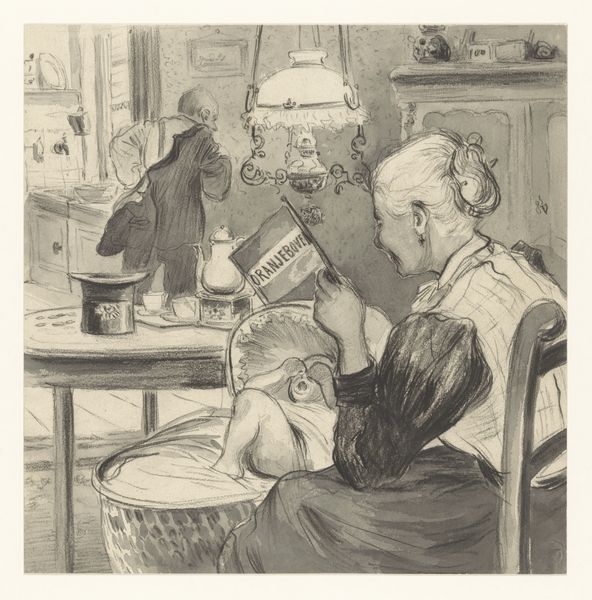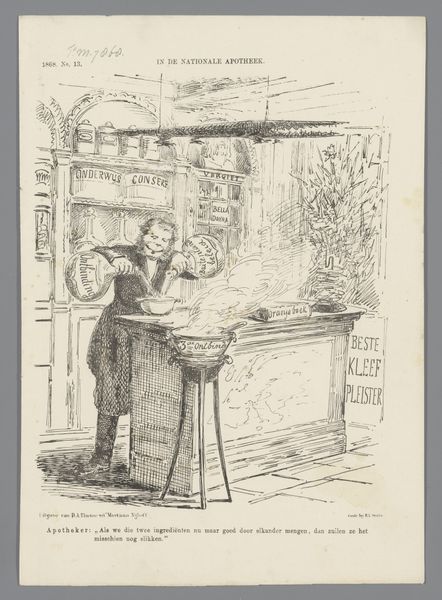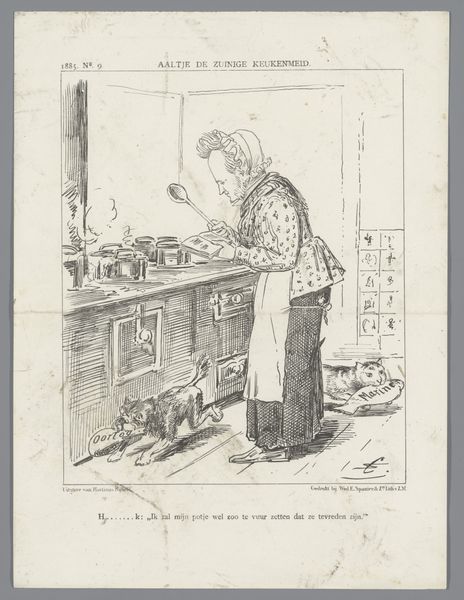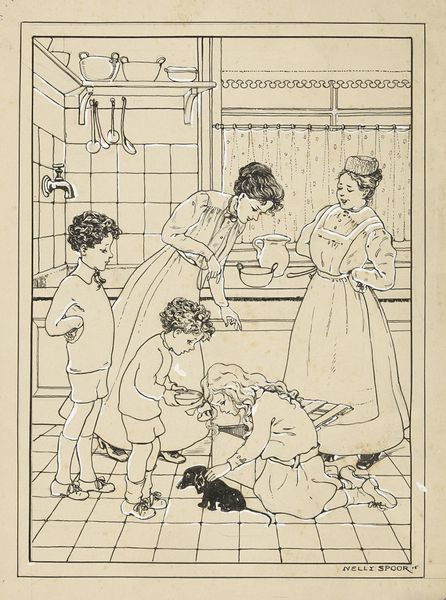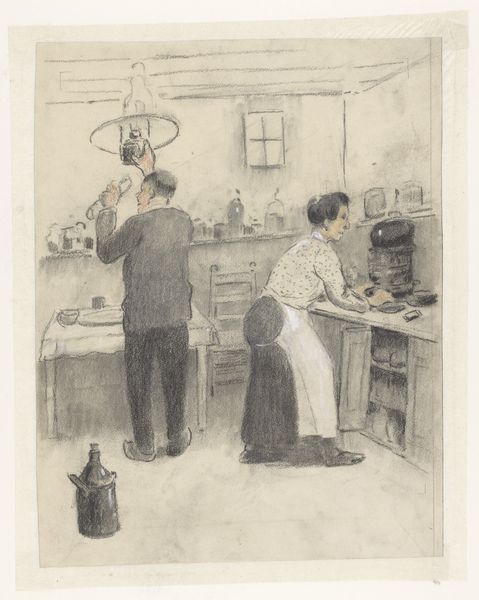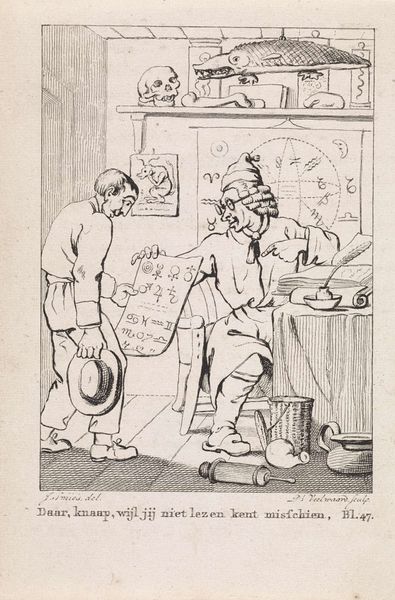
drawing, pen
#
drawing
#
comic strip sketch
#
imaginative character sketch
#
caricature
#
cartoon sketch
#
figuration
#
personal sketchbook
#
idea generation sketch
#
sketchwork
#
sketchbook drawing
#
pen
#
genre-painting
#
cartoon style
#
storyboard and sketchbook work
#
cartoon carciture
#
modernism
Dimensions: height 237 mm, width 263 mm
Copyright: Rijks Museum: Open Domain
Editor: Here we have Hans Borrebach’s pen drawing, "Man wijst naar Pepita in een hotel," created before 1948. It’s a striking image. It’s a domestic scene and I feel a building tension here. The man pointing, the woman looking alarmed… What do you see in this piece? Curator: Immediately, I'm drawn to the power dynamic. Borrebach uses sharp lines and stark contrast, embodying authority but also unease, to highlight a very recognizable social narrative, one carried in Western imagination through comic and caricature. Do you see symbols that repeat this narrative structure? Editor: Well, yes. The man's raised finger, a classic gesture of scolding, coupled with his formal attire juxtaposed against Pepita's maid uniform – these create a visual hierarchy. Also the speech bubble. The drawing is intended to tell a short story or be a caricature, which amplifies his role in relation to hers. Curator: Precisely. The artist captures, perhaps unwittingly, not only a personal interaction but also a larger social memory of class difference made explicit through symbols of service and command. The door behind, too, features a single heart. This seems out of sync with the image, yet also points to larger narrative symbols like “love.” How would you put it? Editor: It does complicate things. Maybe the artist uses irony here? It is clearly a domestic scene, and Pepita appears in the room, seemingly to service the couple. Curator: A charged space, both domestic and potentially exploitative. It forces us to examine how visual language entrenches societal expectations. Are the woman’s actions also representative of a familiar archetype? Editor: Yes, there's almost a theatricality to it. She's embodying the "exasperated servant" in some ways. Curator: That cultural memory shapes how we view even simple drawings, doesn't it? These kinds of images echo symbolic power, well after the moment in time Borrebach created them. Editor: Absolutely, it’s amazing to see how one drawing encapsulates so many ideas about power, memory, and even love through the symbols selected by the artist.
Comments
No comments
Be the first to comment and join the conversation on the ultimate creative platform.
